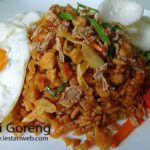Cassava Leaves in Coconut Sauce
Origin: Middle of Java
Ingredients
- 500 gr cassava leaves (use curly kale or savoy as a substitutes )
- enoght water to blanch curly kale/cassava leaves
- 250 g 3 days old tempeh (use fresh tempeh if preferred)
- 2 pc salam leaves or bay leaves
- 2 cm fresh galangale, bruished
- 400 ml very thick coconut milk
- 1 l thin coconut milk
Spices for the paste
- 6 pc shallots, chopped
- 3 gloves garlic, chopped
- 3 pc candlenuts, chopped
- 1 tsp chopped lesser galangal / kencur or 1/2 tsp ground kencur (skip if not available)
- 1 tbsp coriander seeds or 1 tsp coriander powder
- 1 tsp shrimp paste / terasi
- 1 tbsp palm sugar or sugar
- 2 tsp salt or to taste





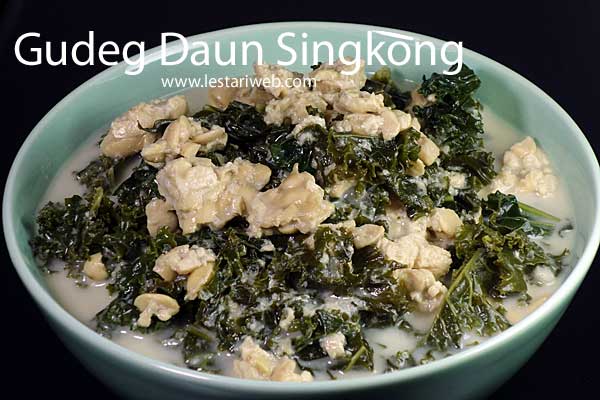
Cassava Leaves in Coconut Sauce
This is a typical vegetables dish of rural indonesian villages in the middle of java region. Mainly this recipe is made with cassava leaves as a main ingredient. It is cheap and very easy to obtain. Sometimes you just pick it up from your own garden, since cassava trees grow everywhere in Indonesia any time of the year. I remember how countless time my late mother has cooked this for us. The seasoning is the same only the main ingredient were varied from cassava leaves, long bean leaves, jack fruit and long list to follow. Sometimes we're fed up of them ;-But since I live abroad, i feel like craving for those exotic delicacies ;-). Since no cassava leaves is available here in Germany, so I try it out with curly kale and the result is very satisfied. As curly kale is not always obtainable then I make with savoy (German = Wirsing) as other alternative. This recipe goes well with any kind of vegetables, as long as not the soft one like spinach. Please don't hesitate to try your own version and let see the outcome :-).Note: Savoy has a really hard texture, almost resemble to old papaya leaves . To get them soft, discard the hard ribs of the leaves, add 1 tbsp salt, mix and squeeze until the texture getting soften. Rinse them under the running water then blanch until cooked. Have a nice try and good luck 🙂
Instructions
- Heat enough water in a deep saucepan with a little bit salt and bring to boil. Add the cassava leaves/curly kale.
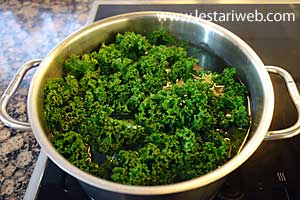
- Blanch cassava/savoy/curly kale leaves until half cooked and tender.
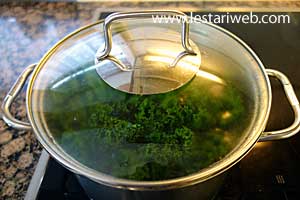
- Rinse immediately under cold running water to preserve a good greeny colour. Set aside to drain.
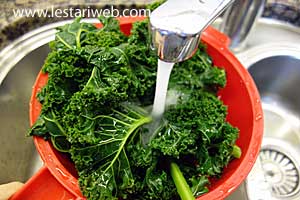
- Discard the hard ribs of the leaves (specially if you use savoy).
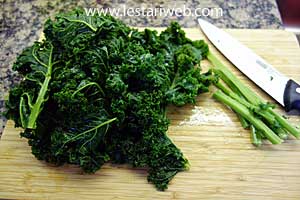
- Cut or slice cassava/savoy/curly kale leaves roughly. Put aside.
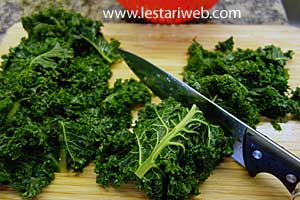
- Prepare the seasoning paste: First, grind the coriander seeds if you use any.
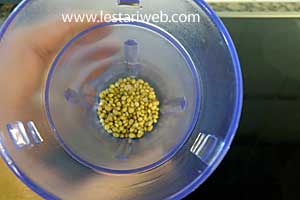
- Slice or chop roughly the other ingredient for the paste if necessary.
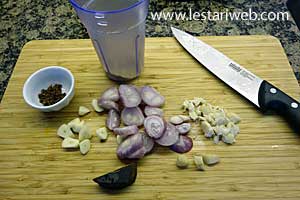
- Put all ingredients for the seasoning paste in a blender or food processor & blend until smooth. (If necessery add a little bit water to help the blending process).
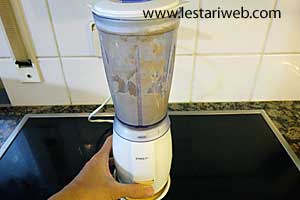
- Put the thin coconut milk in a medium-size deep sauce pan. Add the galangal and salam/bay leaves
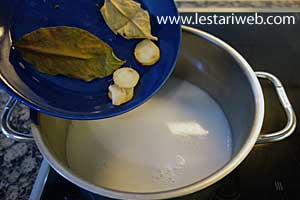
- Add the seasoning paste and bring over medium heat to boil. Stir occasionally.
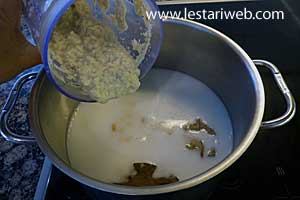
- Meanwhile chop the tempe roughly or squeeze with you hand to get it scrambled.
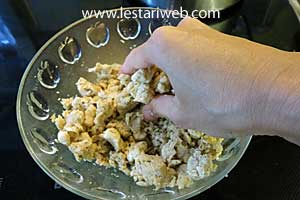
- Add tempeh to the saucepan and stir to mix.
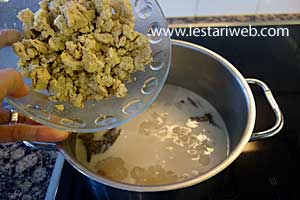
- Add the blanched cassava/curly kale/savoy leaves. Stir to mix.
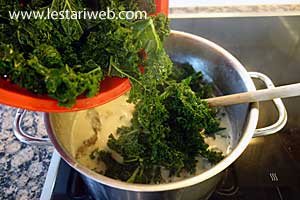
- Pour-in the thick coconut milk, bring to boil then reduce the heat to simmer and stir often for 15 minutes. Stir occasionally to prevent coconut milk from separating.
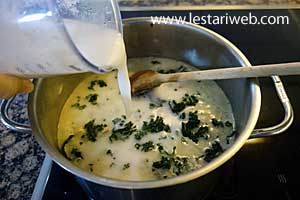
- Adjust the seasoning, add salt & sugar to taste. Remove from heat to prevent overcooked.
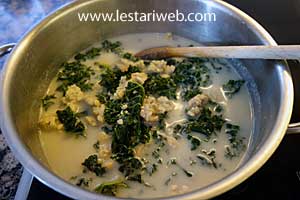
- Serve hot with rice and Fried Chicken and Sambal Bajak
Note & Tipp
- If you're using blender or food processor instead of mortar or grinding stone to make a spice paste, you will probably need to add some liquid to help the blending process. Therefore there is an important method to be noted to get the optimum result.
- 1st: If the spice paste should be fried first in a hot oil then you should add a little amount of OIL into the grinder/blender.
- 2nd: If the spice will be simmered in either water, coconut milk or broth then adding the specified liquid or a small amount of water is recommended. But please do not apply it vice versa, otherwise you could absolutely ruin the taste 😉

